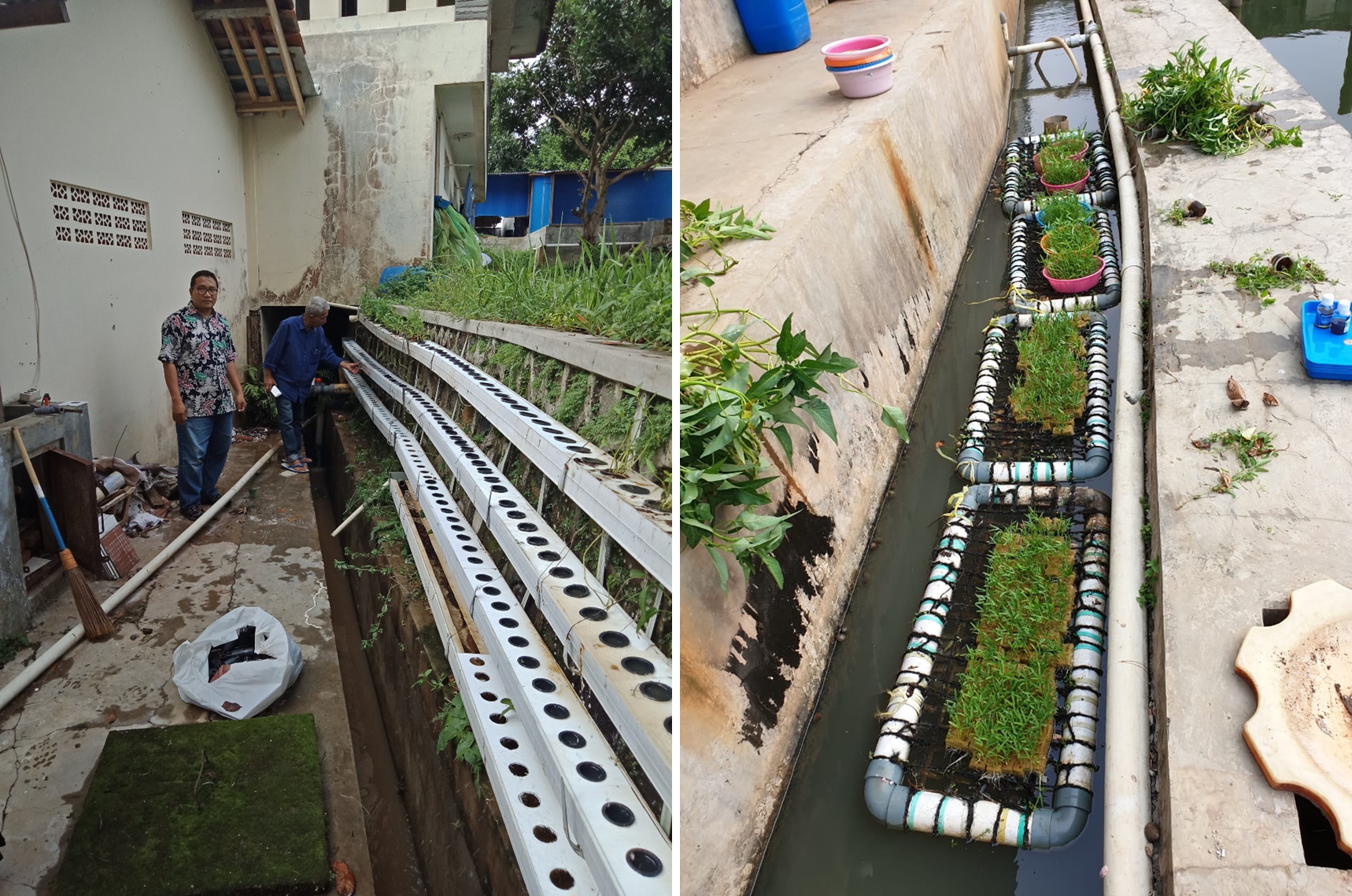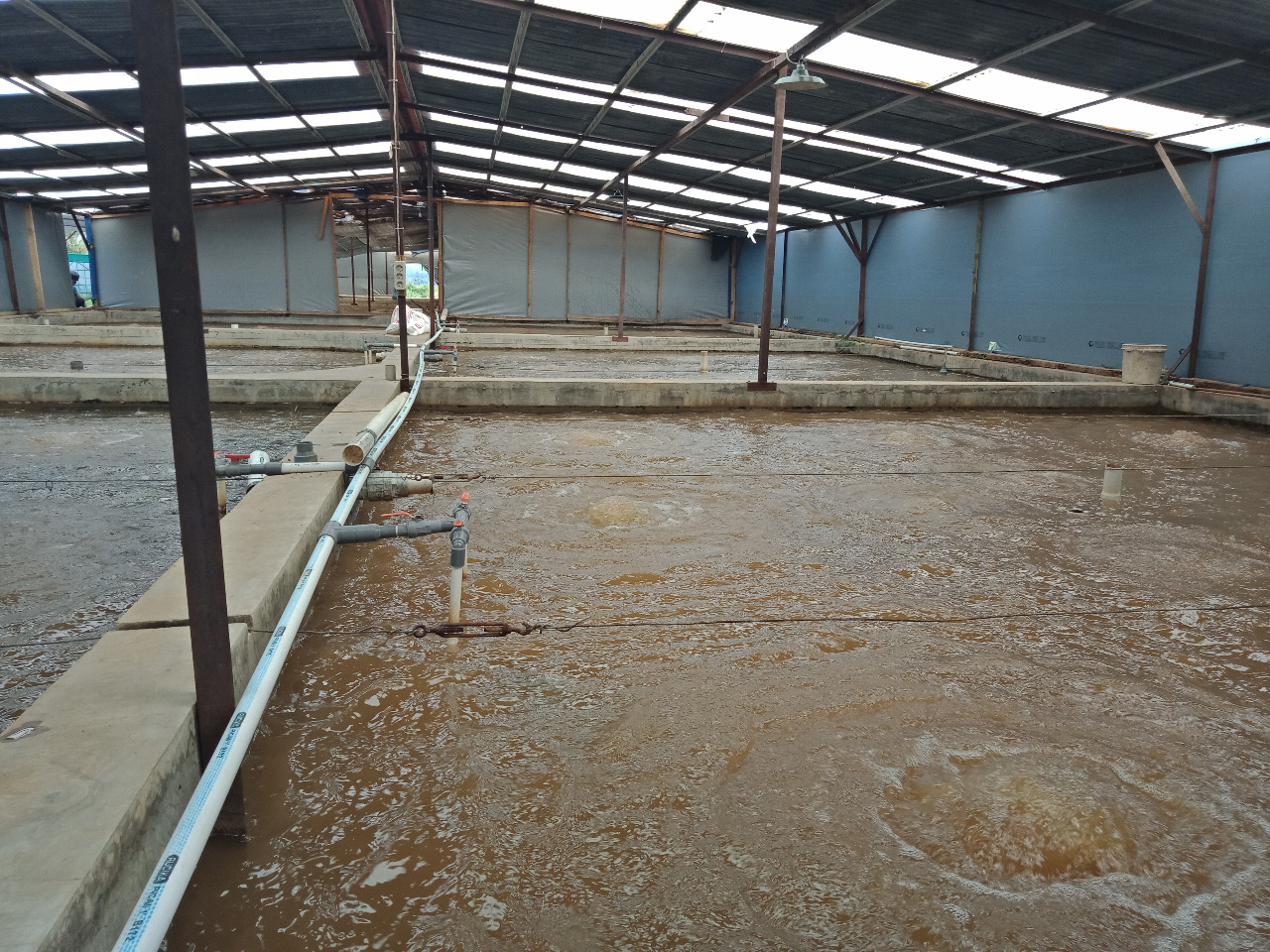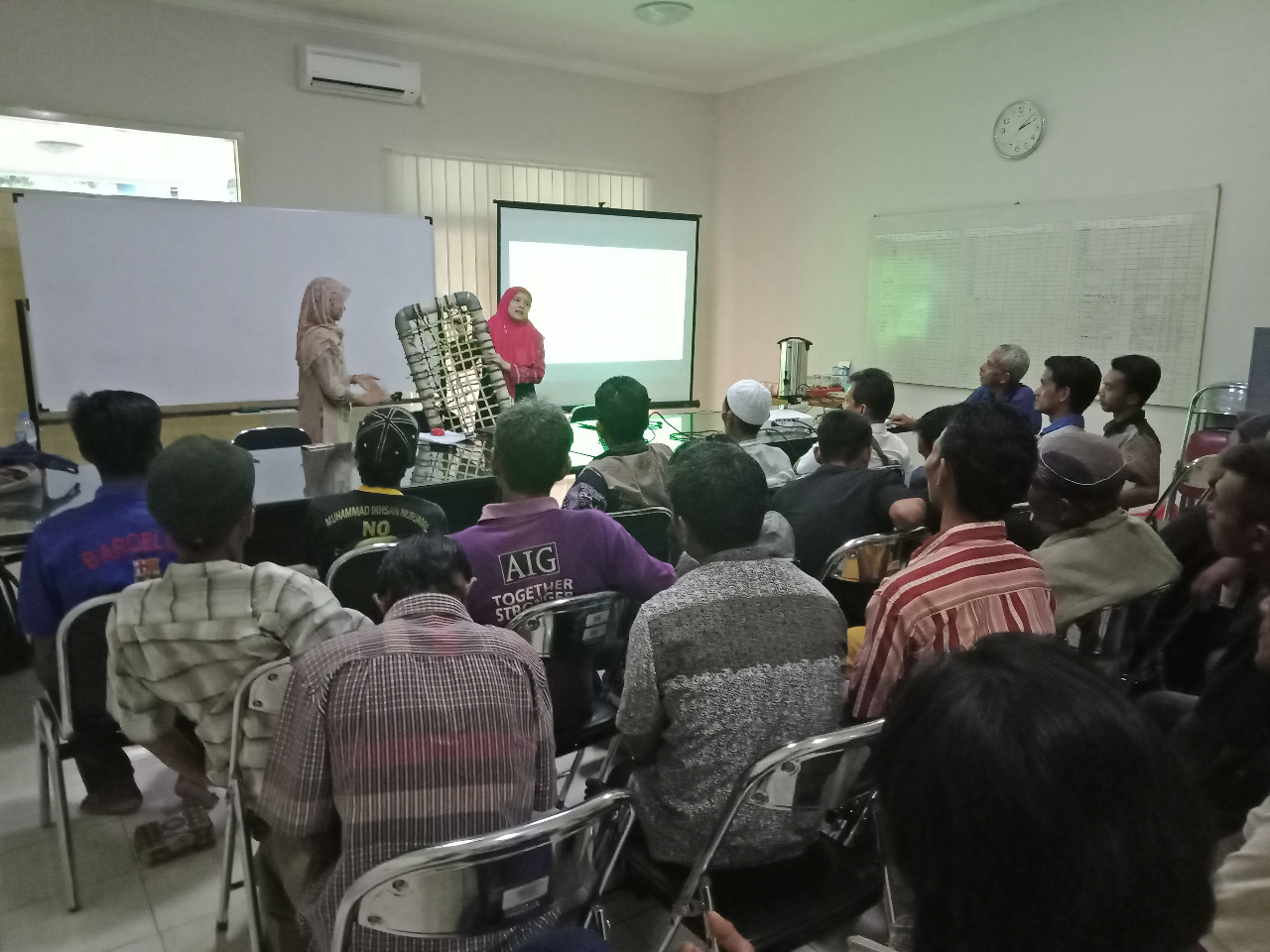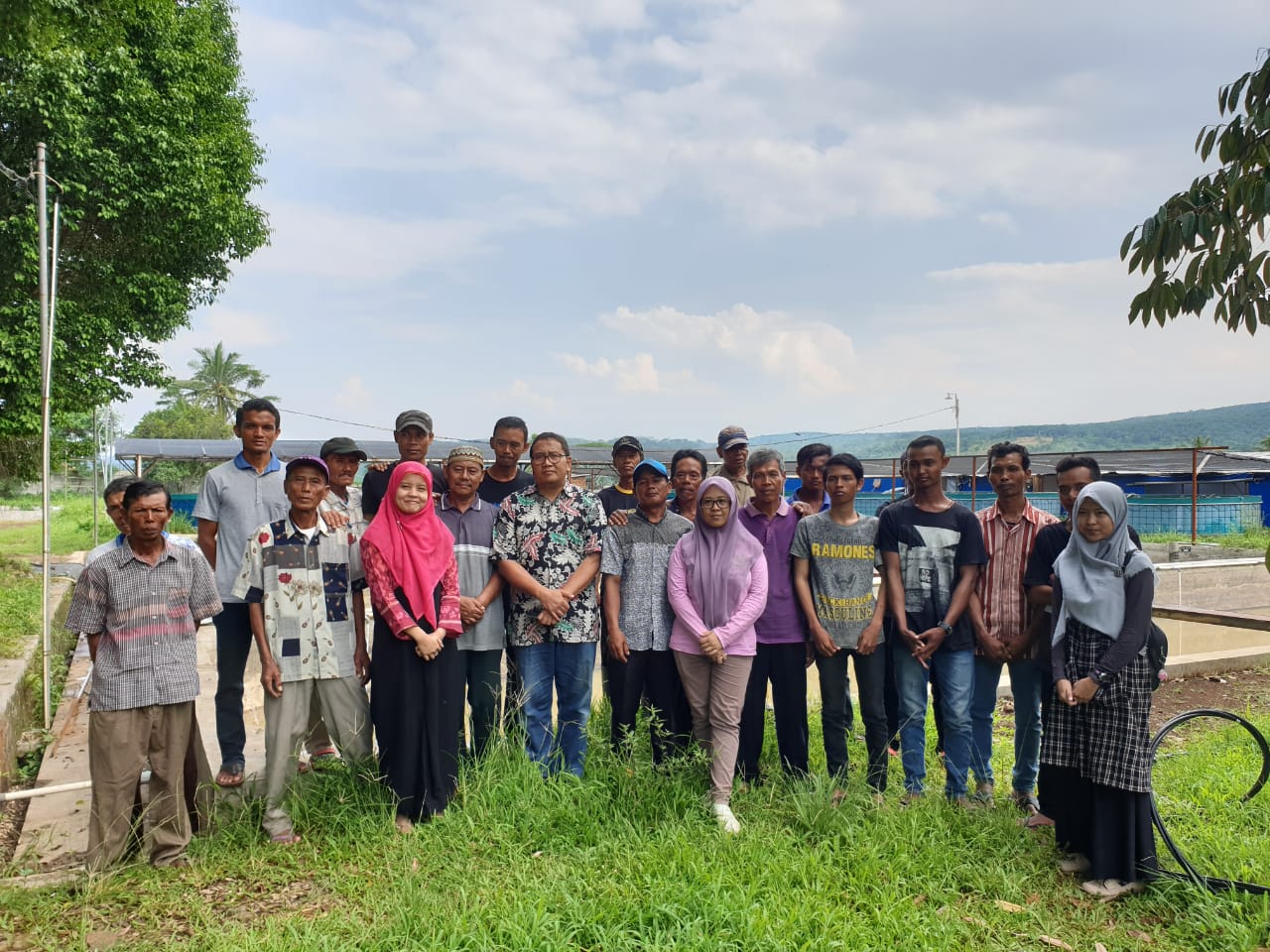ITB Conducts Community Service by Making Aquaponic System in Cinangsi Village
By Adi Permana
Editor Adi Permana

CIANJUR, itb.ac.id – Institut Teknologi Bandung (ITB) made an aquaponic system in Cinangsi village, Cianjur. This community service serves as a part of small scale study to look for the solution to Citarum waste.
The activity was conducted by Center for Rural Areas Empowerment (P2D) of ITB which is led by Endra Susila, Ph.D., a lecturer from Geotechnical Engineering Research Group, Faculty of Civil and Environmental Engineering of ITB who also serves as the head of P2D-ITB.
Endra Susila and the team explained that the aquaponic system aims to remediate the waste water from brackish water ponds and exploit the compound contents to grow water plants such as water spinach, watercress and other consumable vegetables.
*Brackish fish pond whose water is used for aquaponic (Photo: Dr. Endra Susila)
Aquaponic system is a combination of aquaculture and hydroponic. Aquaculture is fish farming, while hydroponic is vegetables planting on water media. The combination utilizes waste water from brackish water ponds that contain high organic compound for growing plants.
“According to survey result and information we acquire about the condition of environment and community activities in community service target area, their problem is waste from brackish ponds/fish ponds. The solution is utilizing the waste for productive activity. Aquaponic is chosen because the system is relatively simple and take low cost so that it is applicable for the community,” he said.
The residents will get the benefit of cleaner water that comes out of pond (output), thus reducing the potential for pollution and can even be used for the benefit of surrounding communities, corresponding to condition of output water, and can generate new job opportunity for surrounding residents by producing fish and vegetable products. The making of aquaponic system also involves surrounding residents. They get to learn how to make the system and feel enthusiastic about the program.
*Training of making aquaponic system to residents (Photo: Dr. Endra Susila)
This community service program also serves as ITB’s active role in tackling environmental issues by reducing waste disposal into rivers such as Citarum. The community service was conducted in June-December 2018.
“Hopefully, after the community service, the residents can use the aquaponic system to sustainably produce fish and vegetables,” said Endra and team. He also added that during the community service, the plants they have tried to grow are water plants. Next, they will further try other kind of plants such as horticulture and decorative plants.
Besides aquaponic system, ITB also conduct two community services activities in Cinangsi village, namely making aerial photographs and making compost out of household wastes, respectively led by Prof. Ketut Wikantika and Dr. Qomaruddin Helmy.
The activity is a part of Community Services for Citarum Harum that goes under the coordination of Institute for Research and Community Services of ITB (LPPM-ITB).

.jpg)

.jpg)
.jpg)
.jpg)

